This is a step-by-step keyword research checklist to help you rank higher in unpaid search results. And drive more valuable traffic to your site.
We’ve used these steps on our blog to rank for over 156.7K organic keywords in the U.S. alone (as of May 2024).

Here’s the checklist to guide your keyword research process:
1. Brainstorm Seed Keywords
Your first step should be to brainstorm seed keywords. Which are broad terms or phrases that are related to your brand, product, service, or niche.
They’re the starting point for your keyword research process. Because they help you begin expanding your keyword list.
To start, think about the problems you solve. And consider the search terms people might use when searching for your type of business.
For example, if you own an online tech magazine, some of your seed keywords could be:
- “tech news”
- “gadget review”
- “buying guides”
- “technology magazine”
- “tech review site”
2. Discover Relevant Search Terms
Now that you have a list of seed keywords, you can use them to identify relevant search terms you’ll want to use in your content.
Enter a seed keyword into the Keyword Magic Tool. And you’ll get tons of related keyword ideas and valuable metrics (we’ll cover those metrics and how to use them later).

Then, use the suggested groups and subgroups on the left to focus on terms that are particularly relevant to your niche.
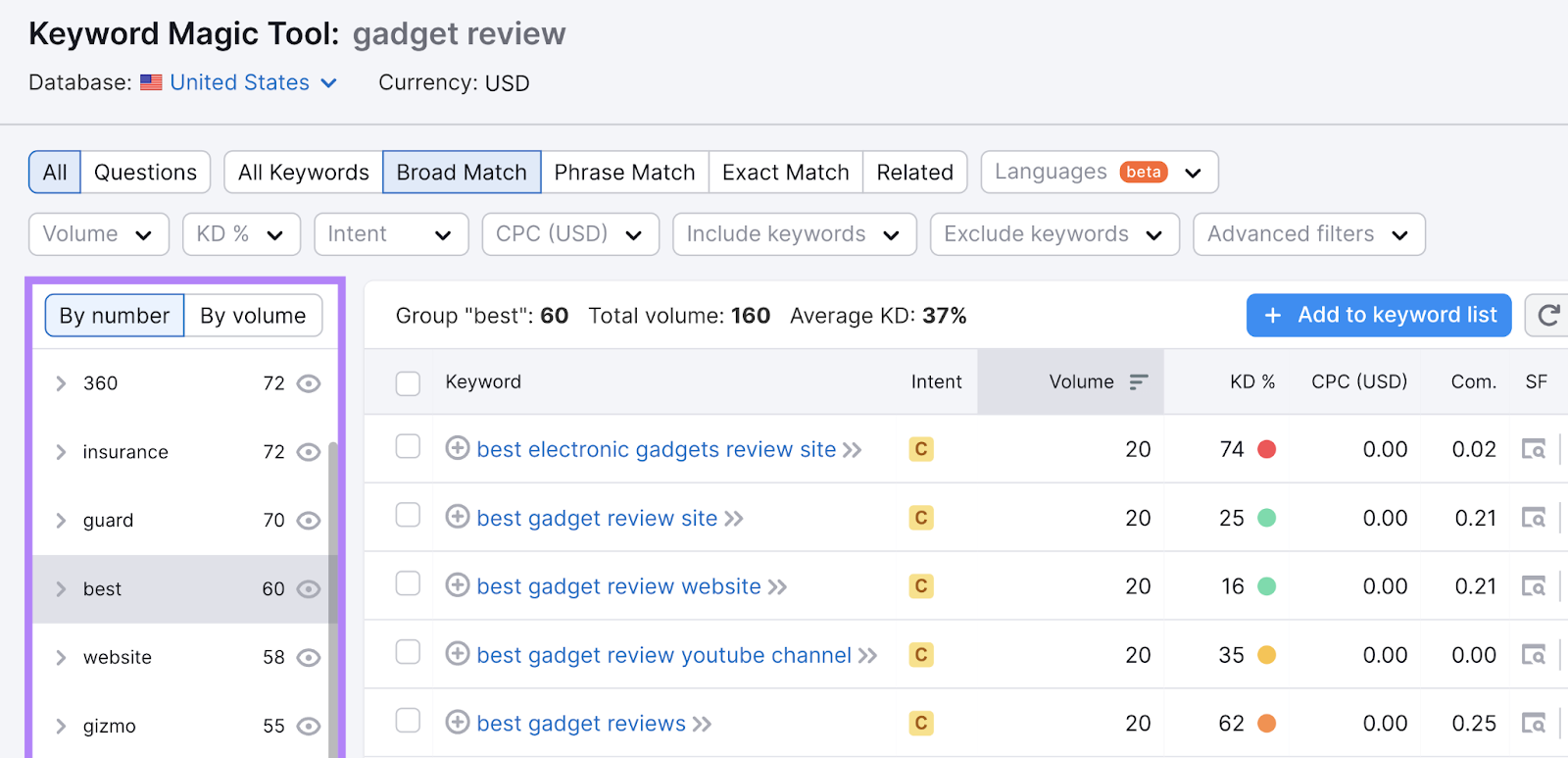
Do this for several seed keywords, and you’ll get a great overview of your niche and the most important topics.
3. Find Long-Tail Keywords
Long-tail keywords are very specific search terms that tend to have relatively low search volumes—and also relatively little competition.
These terms are typically easier to rank for. Which is great for building topical authority that can help you rank for more competitive terms later on.
And since they’re so specific, they tend to bring in highly-targeted traffic. Meaning those users are likely to be highly interested in your product or service—and possibly more likely to convert.
For example, a seed keyword like "shoes" may get hundreds of thousands of monthly searches.

A long-tail term like "womens running shoes size 8" that’s more specific has a much lower search volume.
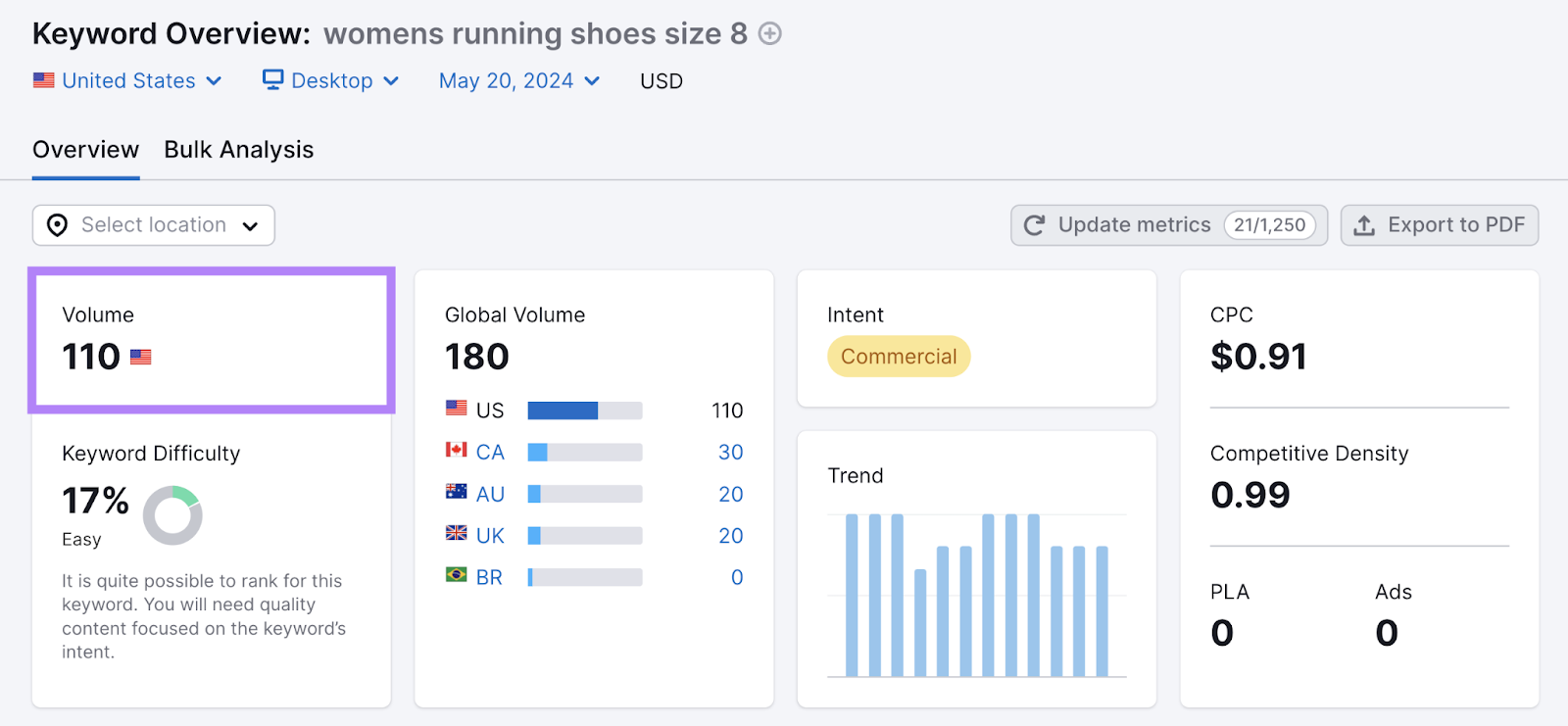
But someone searching for "women's running shoes size 8" is much closer to making a purchase than someone just searching for "shoes."
To find long-tail keywords, enter a seed keyword into the Keyword Magic Tool.
Take a look at the first few keywords and the “Volume” (monthly search volume) and “KD %” (ranking difficulty) columns.
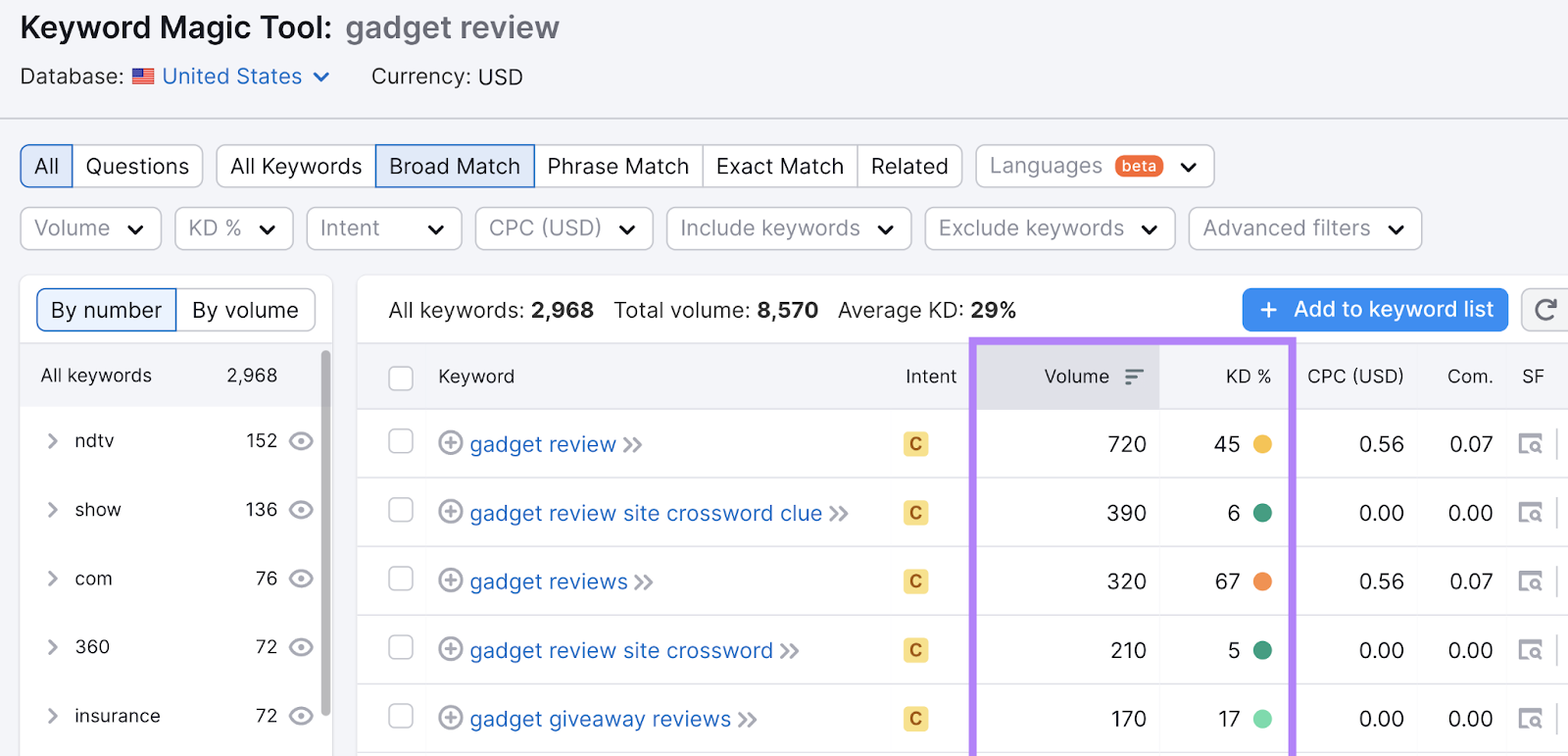
These clearly aren’t long-tail keywords.
So, let’s use the “KD %” filter to only show keywords with low ranking difficulty.
Click on the filter and select “Easy.”
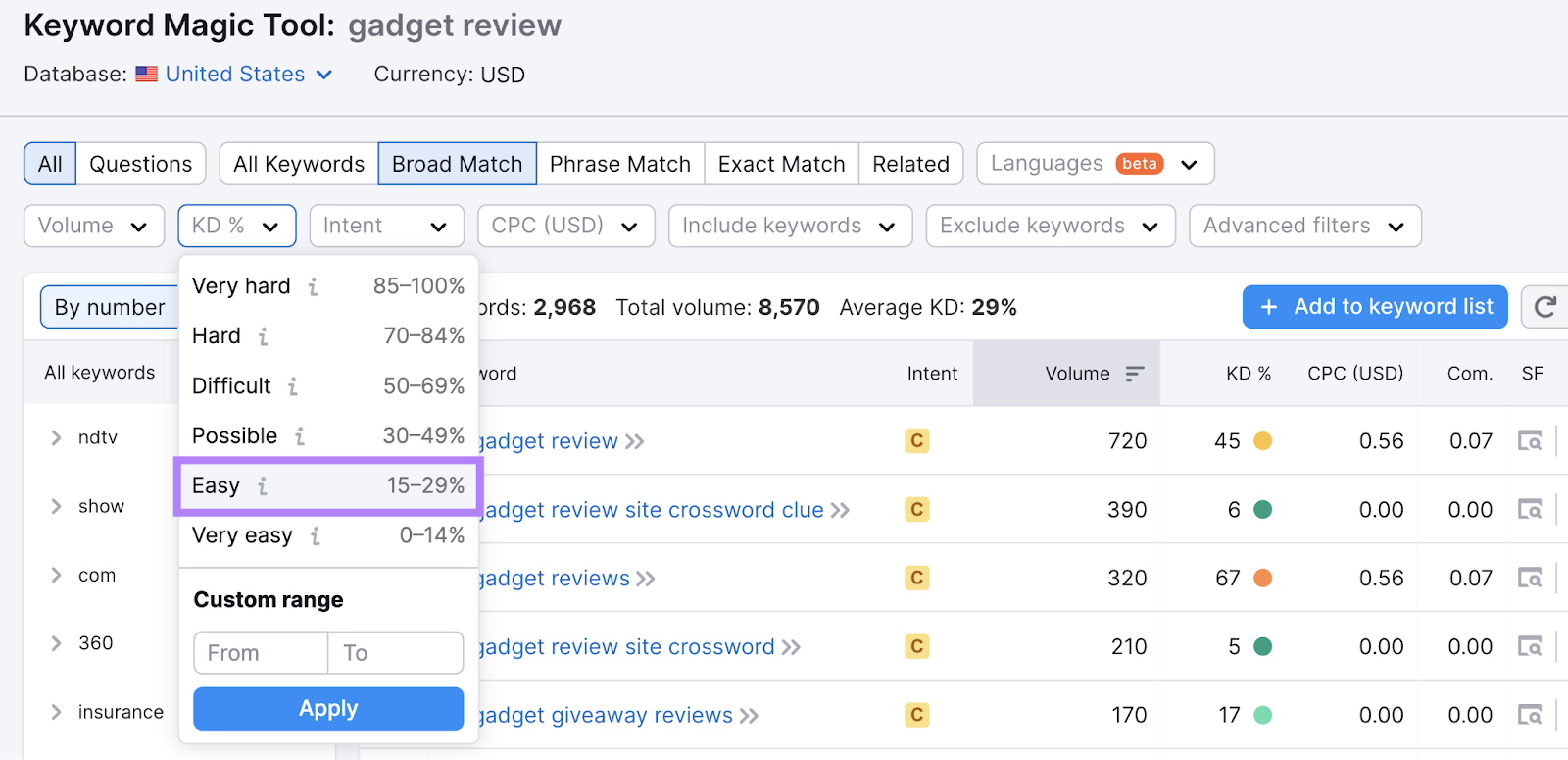
Now, you’ll see tons of long-tail keyword ideas.
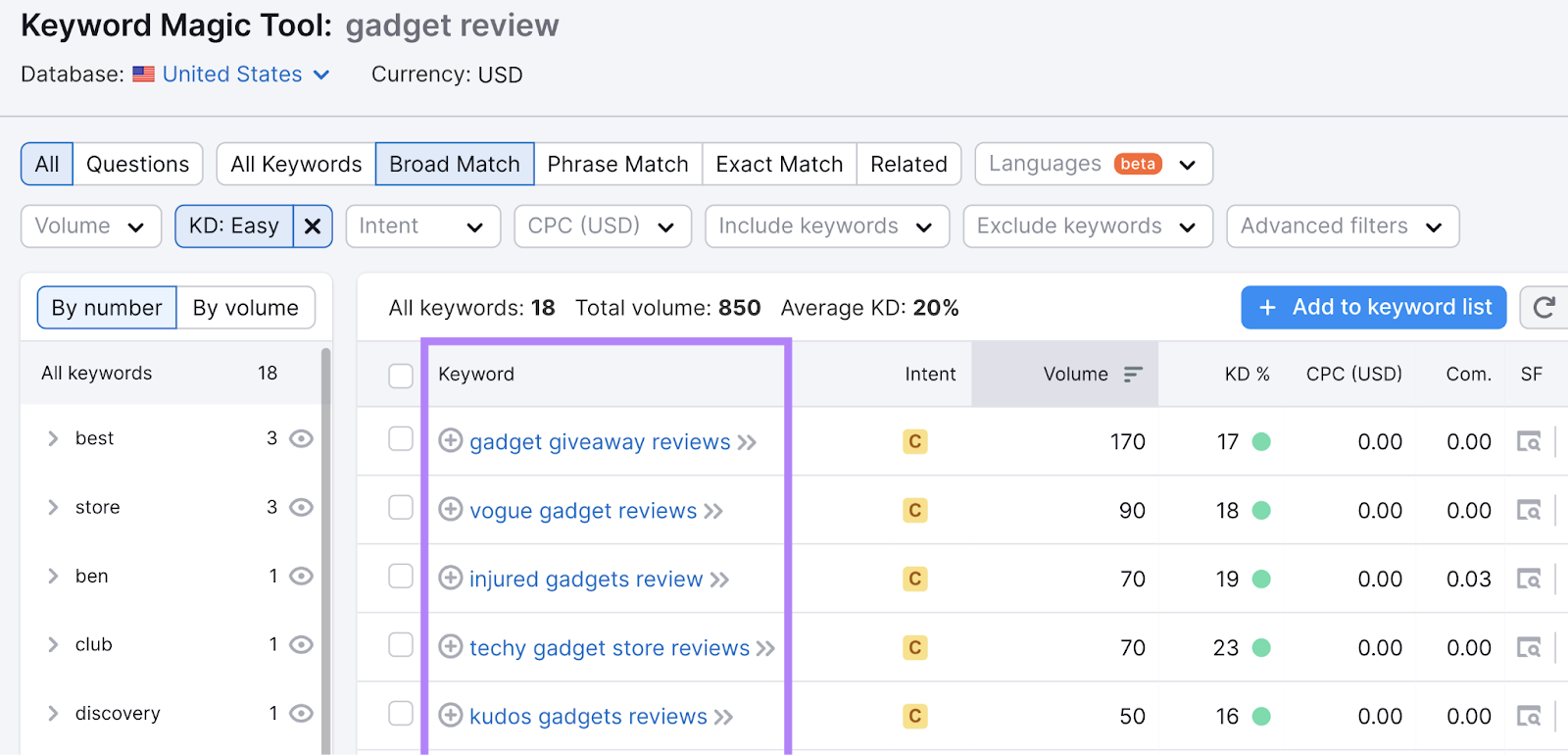
Repeat this process and you’ll have a strong list of long-tail keywords to consider.
4. Get Keyword Ideas from Competitors
Next on your keyword research checklist is to research what your competitors are ranking for. Because if they're ranking for certain terms, those are likely relevant and valuable keywords for your site.
This type of competitor keyword research can help you identify gaps. These gaps are keywords your competitors are ranking for but you aren’t.
To find them, use the Keyword Gap tool.
Enter your URL and up to four competitors’ URLs. Then, click “Compare.”

Scroll down to the table and click the “Missing” filter to see the keywords all of your competitors rank for but you don’t.
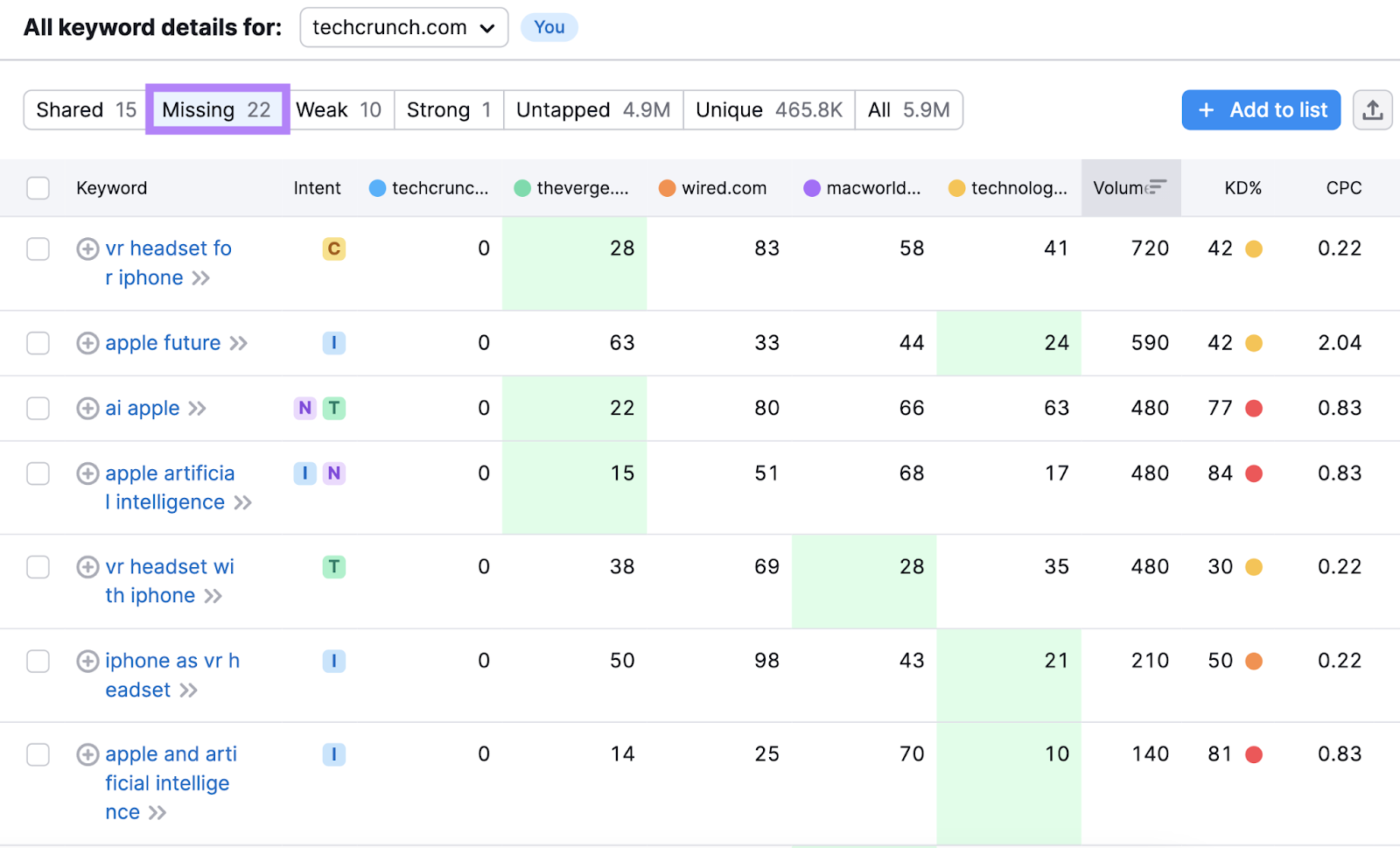
Each one of those keywords is an opportunity for you to create content that can bring in more traffic.
5. Analyze Keyword Metrics
At this point, you likely have a big list of potential keywords to target.
But not all keywords are equally valuable.
Some will be virtually impossible to rank for. While others will drive little to no traffic to your site or conversions for your business.
That's why it's crucial to analyze each keyword's metrics before determining which ones to target.
Enter the search terms you’ve identified into the Keyword Overview tool (you can evaluate up to 100 search terms at once), and then look into helpful metrics like:
- Search volume: How often people search for a keyword per month, on average
- Keyword difficulty: How hard it would be to rank in the top 10 results for that term
- CPC: The average price advertisers pay for a user’s click on an ad triggered by that keyword
- SERP features: Unique results outside of traditional listings on Google’s results pages
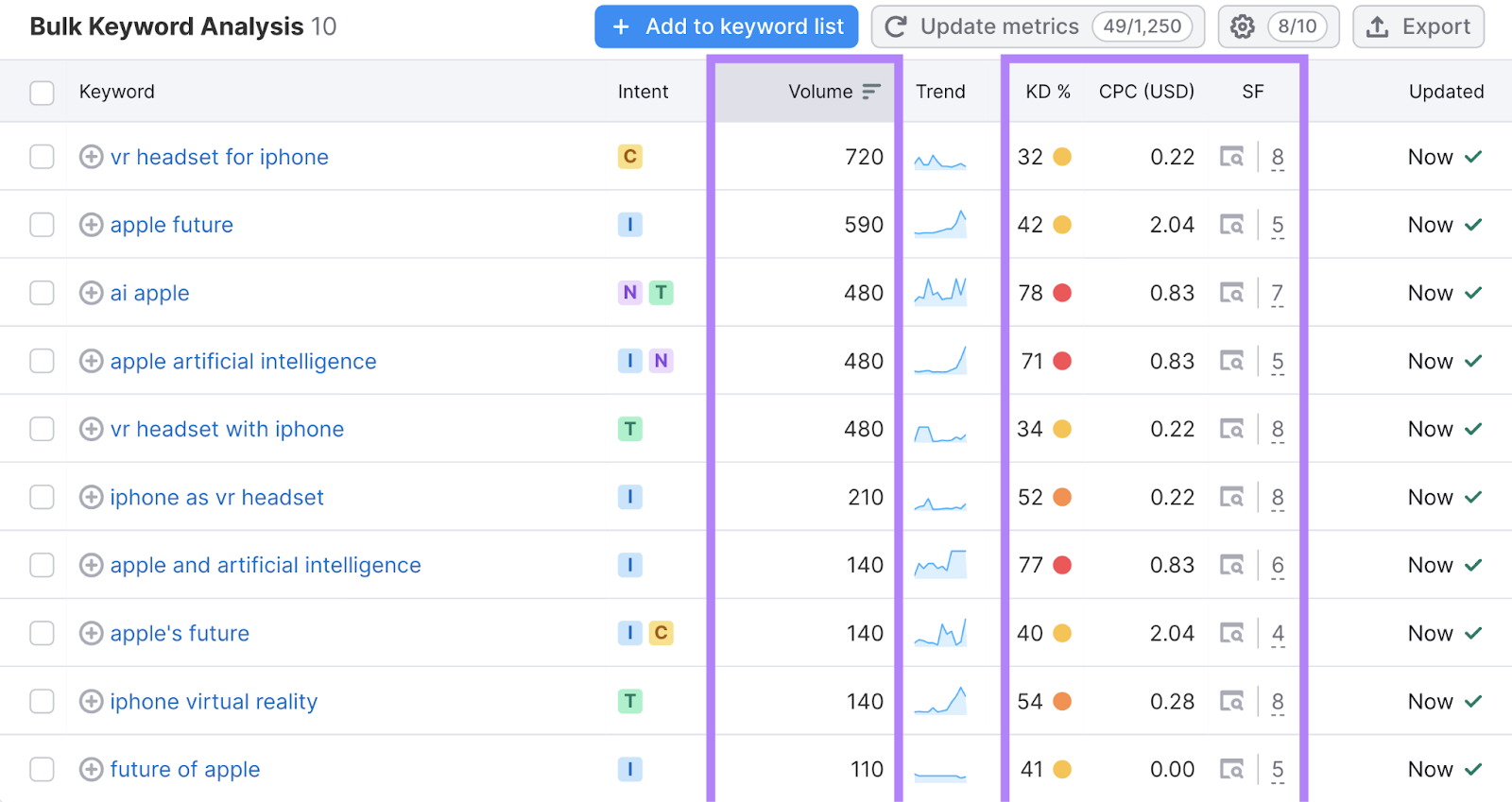
As a general rule, target keywords with higher search volumes but low or medium difficulty scores. Which tend to offer good traffic opportunities without being impossible to rank for.
This will help you refine your list to a set of realistic, business-relevant keywords to focus your SEO efforts on.
6. Determine Search Intent
Search intent is the reason behind a user's query on a search engine. And understanding intent is crucial for keyword research.
Why?
Because Google’s goal is to provide relevant results for users. So, understanding intent can help you create content that’s more likely to rank.
There are four main types of search intent:
- Informational: Users are looking for information (e.g., "how to start a blog" or "what is keyword research"). These queries indicate a desire to learn or find answers.
- Navigational: Users are trying to find a specific website or online destination (e.g., "semrush" or "facebook login”).
- Commercial: Users are interested in investigating products or services before making a purchase. Queries like "best email marketing tools" or "crm software" have commercial intent.
- Transactional: Users are ready to make a purchase or complete a specific action (e.g., "buy semrush subscription" or "download grammarly").
You can easily find any keyword’s intent with Keyword Overview. Just look for the “Intent” widget.
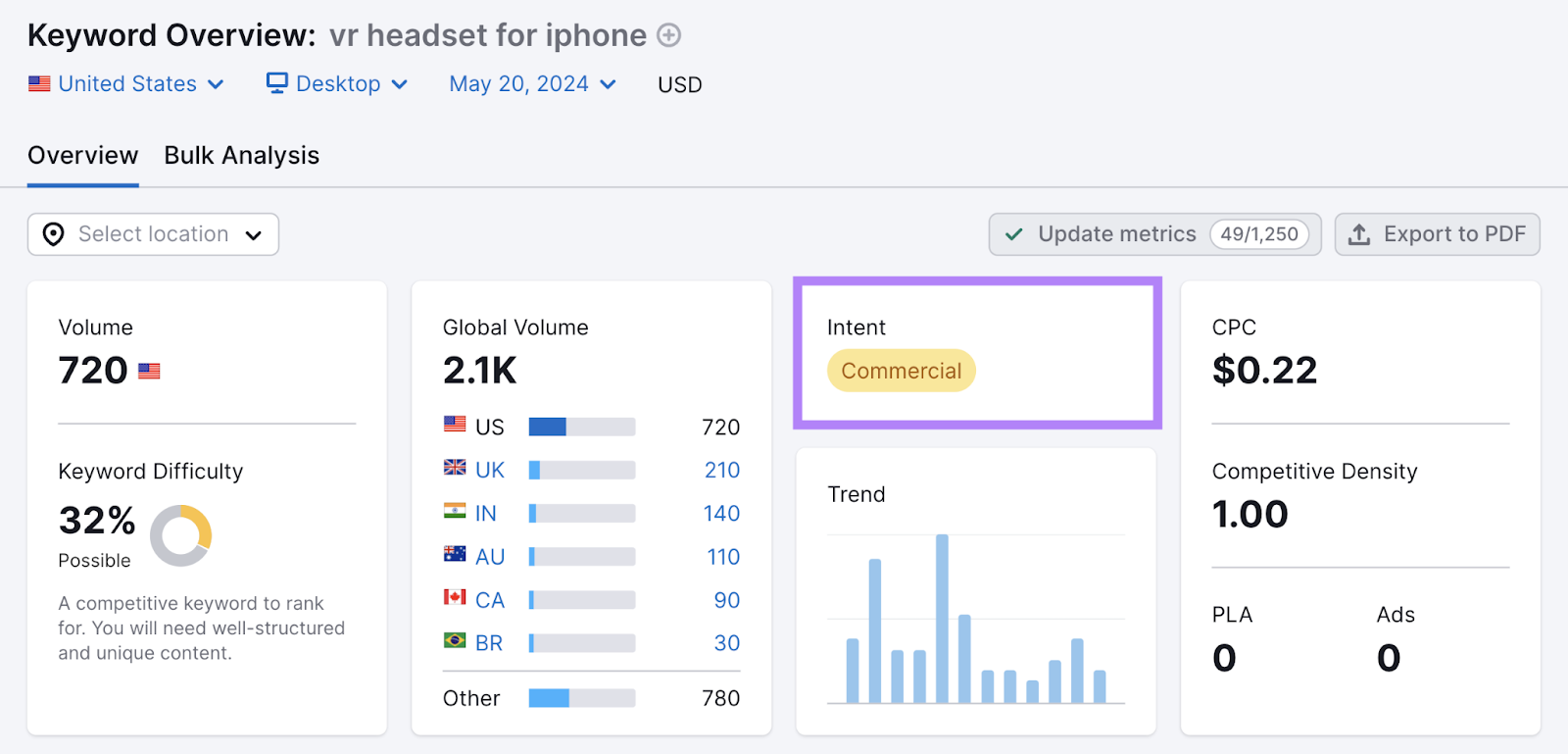
And if you’re actively conducting keyword research, look for the “Intent” column in the Keyword Magic Tool.
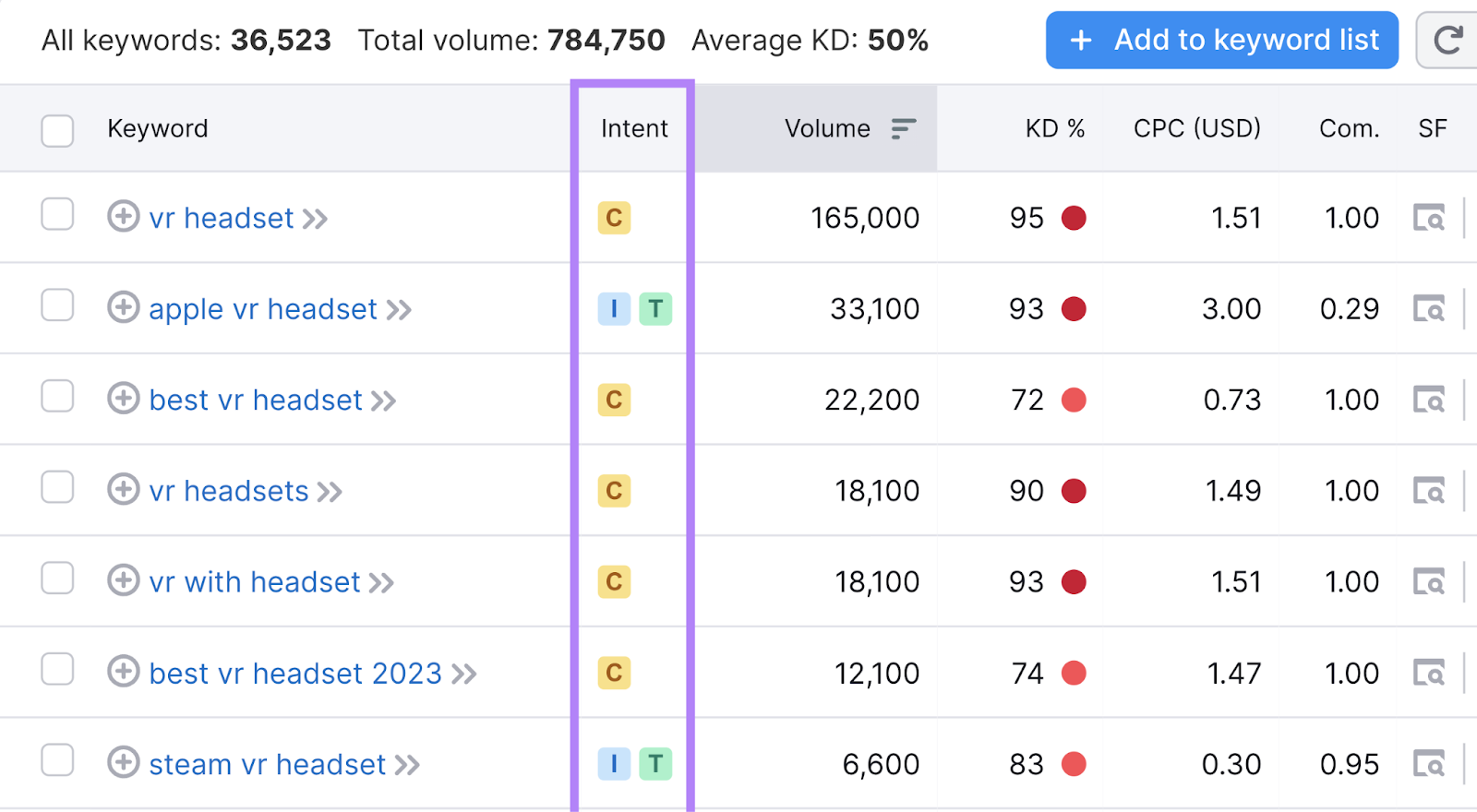
You can also use the “Intent” filter to only see keywords with a certain type of intent.
Just click the drop-down, select the intent(s), and click “Apply.”
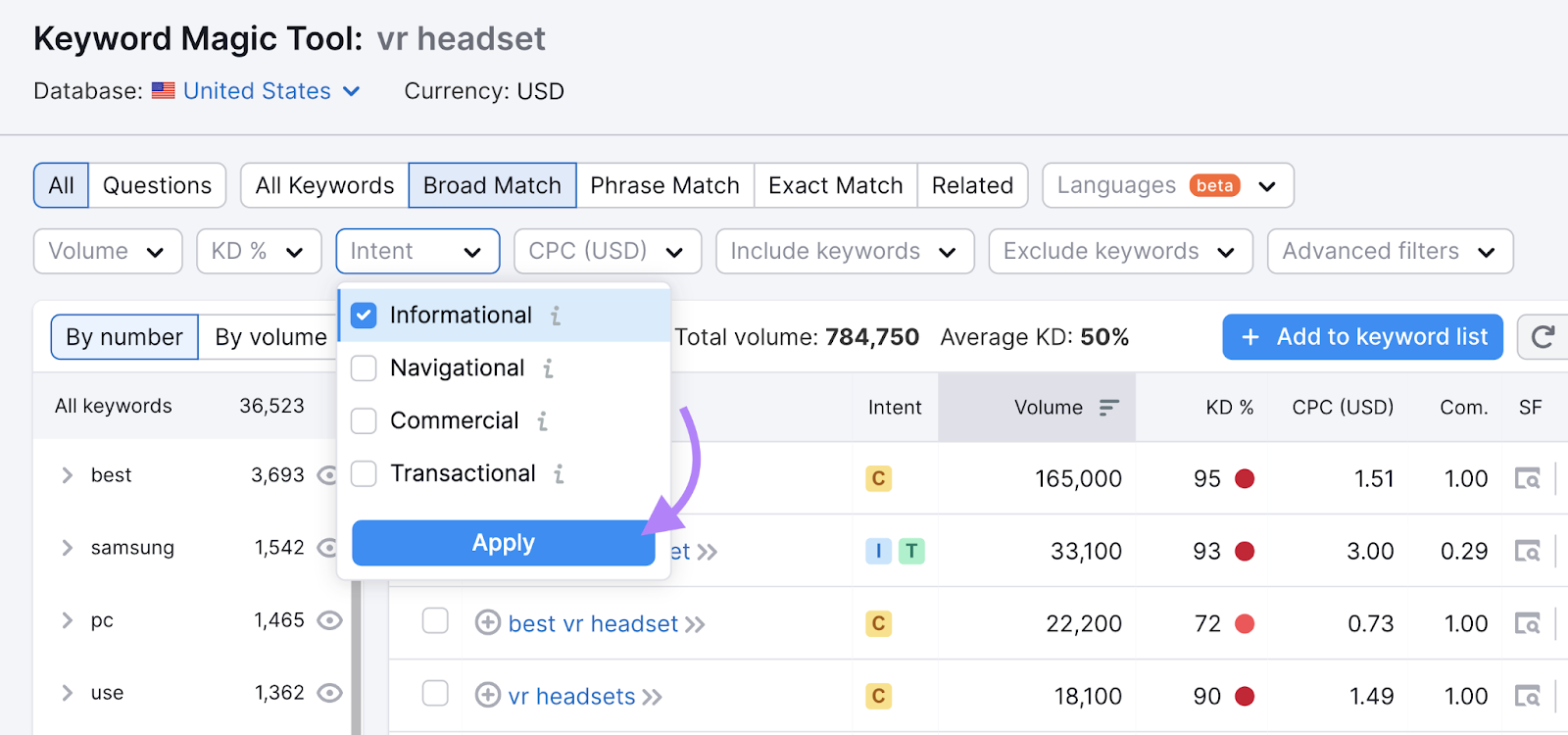
Once you have a better understanding of each term’s intent, you can plan to create content that directly addresses it.
For example, if someone searches "how to unlock cellphone," they likely want a step-by-step guide. Not a product pitch.
7. Cluster Your Keywords
Keyword clustering is the process of grouping similar keywords together based on intent. Which can help each of your pages rank for several keywords.
You can easily cluster keywords with Keyword Manager.
Just open a keyword list you already created. Or, click “create a regular list” to import your keywords.
And click “Create list.”

The tool will automatically group related keywords based on topic and intent.
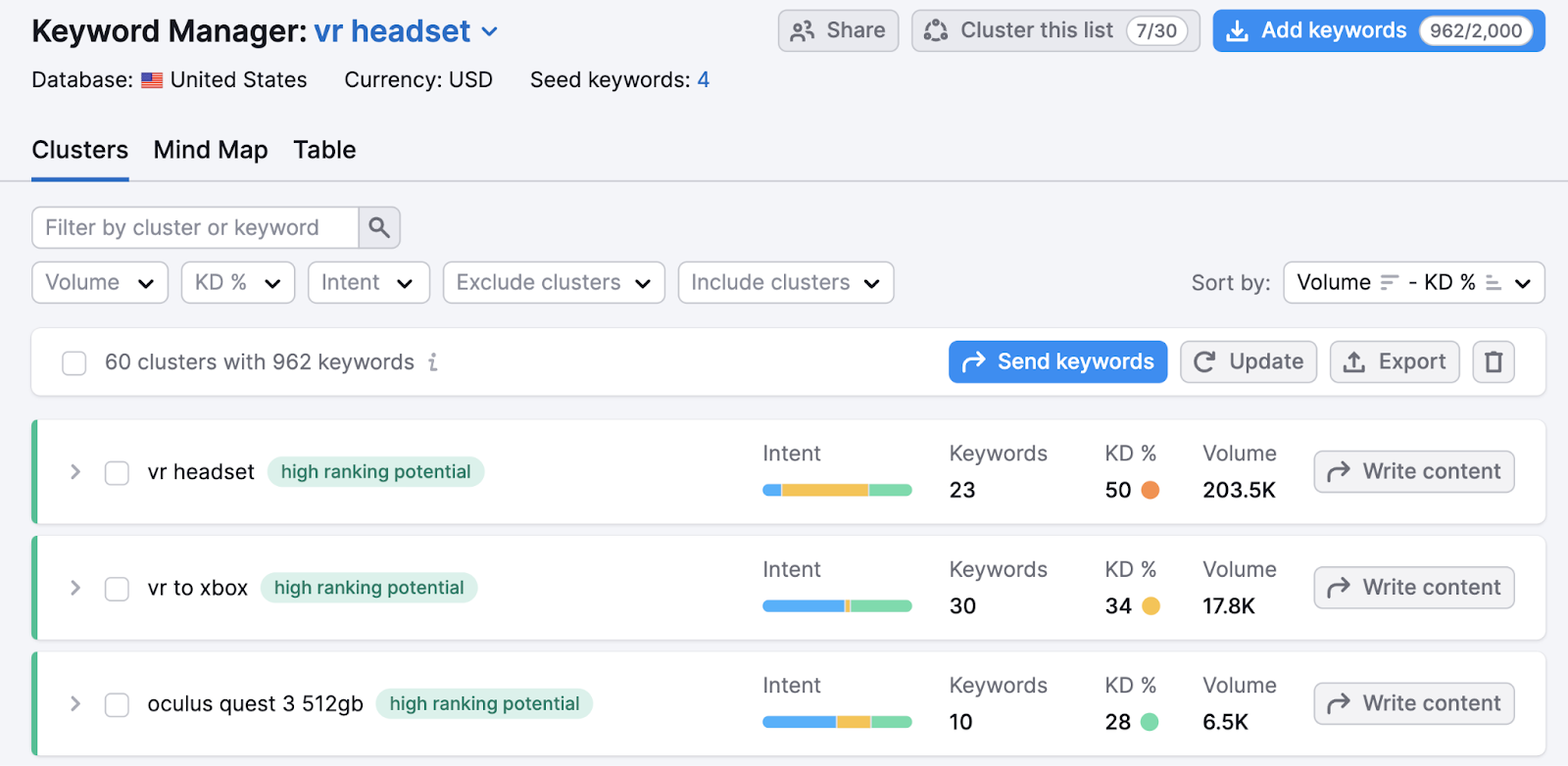
To see all the keywords in the cluster (and their metrics), click the arrow.
Like this:
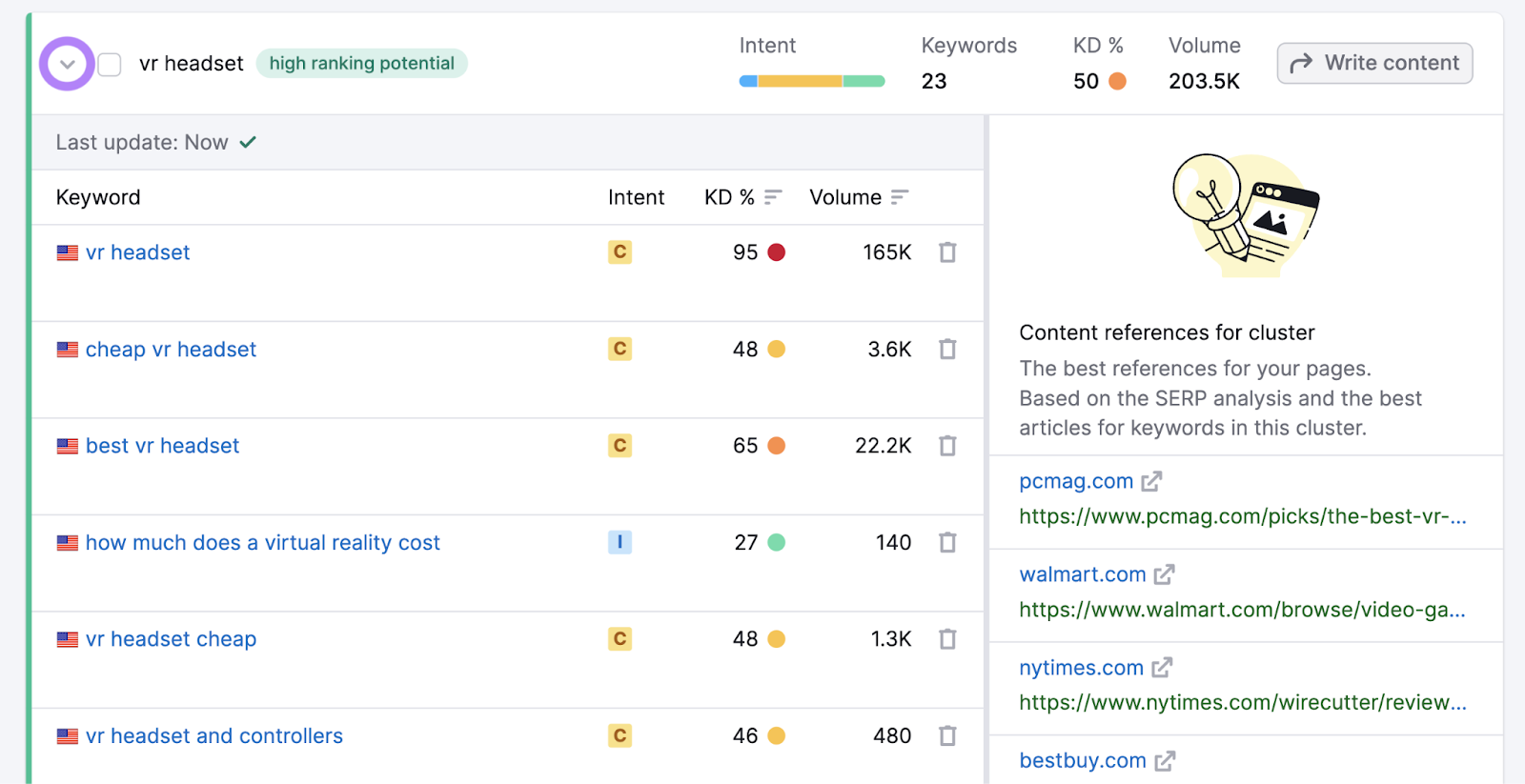
Generally speaking, the term with the highest search volume is the primary keyword (the main keyword a page targets) for a given cluster. And the others are secondary keywords (variations that support the primary term).
Use these clusters for keyword mapping. Which is tactically assigning keywords to pages on your site.
This can help you optimize pages for the most relevant keywords, prevent keyword cannibalization, and identify and fill content gaps.
8. Prioritize Your Keywords
Prioritizing keywords involves determining how much they can impact your business goals. So you know which ones to start with.
To do this, segment your keyword lists by considering where they fall in the content marketing funnel:
- Top-of-the-funnel (ToFu) keywords: Have high search volumes and indicate users are in the awareness stage. They’re ideal for attracting new visitors and building brand awareness. For example, "what is seo" or "how to start a blog."
- Middle-of-the-funnel (MoFu) keywords: Have moderate search volumes and indicate users are considering different options. These more specific keywords are great for nurturing leads and highlighting your value proposition. For example, "best seo tools" or "blogging platforms compared."
- Bottom-of-the-funnel (BoFu) keywords: Have lower search volumes but higher buyer intent. Users searching these transactional keywords are ready to make a purchase decision. For example, "seo tool free trial" or "semrush pricing."

Then, focus on BoFu keywords directly aligned with your core product or service. Because these have the highest potential to drive sales and revenue.
Next, target MoFu keywords that educate prospects about your solutions.
Finally, include ToFu keywords to increase brand awareness and attract new audiences to the top of your funnel.
An effective keyword strategy targets queries across all funnel stages to attract, nurture, and convert customers. But starting from the bottom of the funnel can help you meet business goals more rapidly.
9. Do Audience Research to Plan Your Content
Your target audience is the group of people you want to reach with your marketing. They tend to share common characteristics like age, gender, interests, and buying habits.
And understanding your target audience—who they are, what their interests are, etc.—can help you tailor your content to them. To ensure what you say resonates with the people who land on your site.
You can research competitor audiences to help define your own.
Open One2Target, enter up to five competitors’ domains, and click “Analyze.”
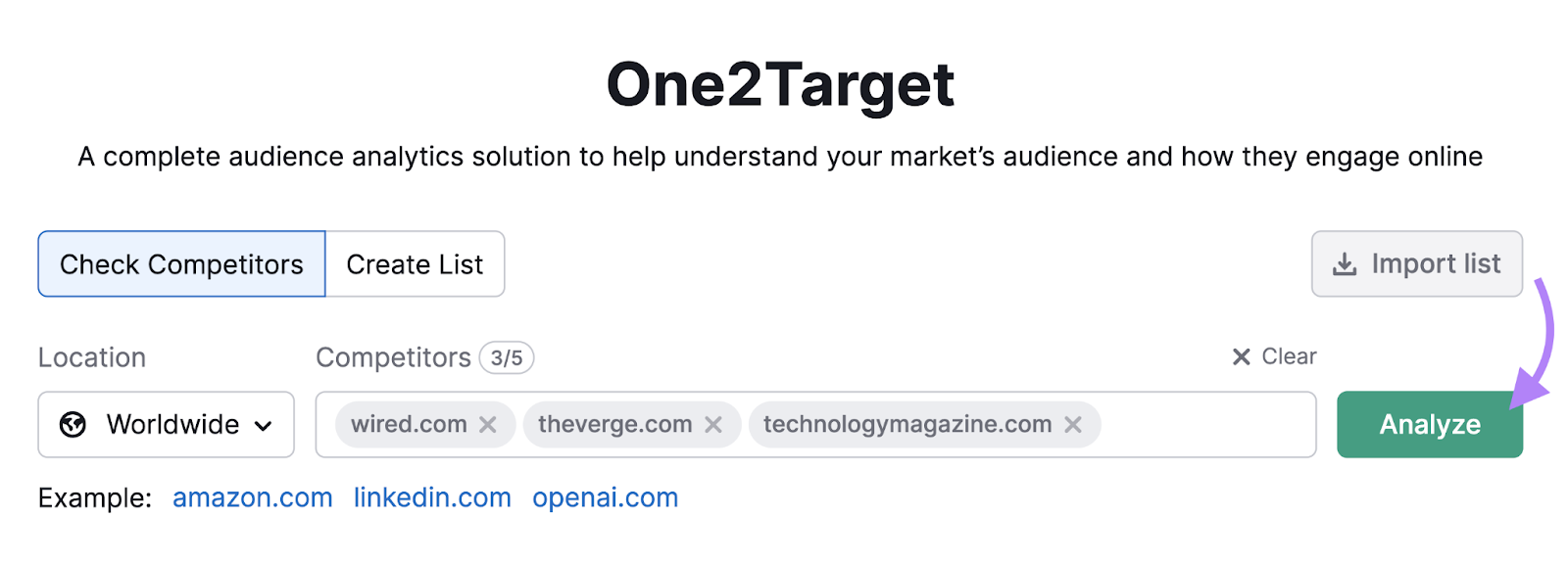
You’ll see a complete overview of the audience’s demographics, socioeconomics, online behavior, and more.
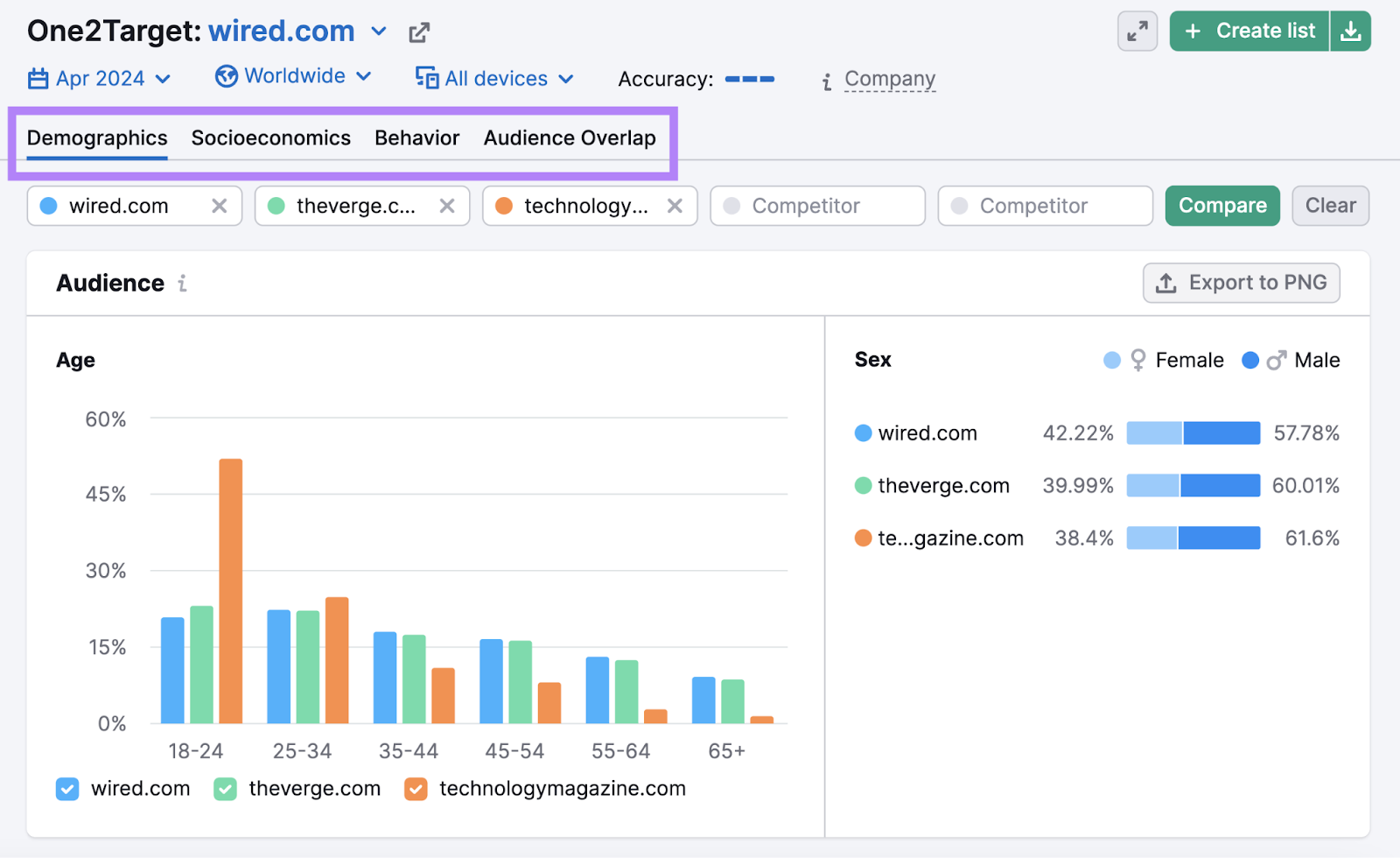
Looking at the data, you may find insights like:
- What age bracket most of your audience falls into
- If they’re students, unemployed, or have full-time jobs
- Which social media platforms they use most often
And lots more.
Use all of this information to inform the content you create with your priority keyword clusters.
Bonus: Track Your Keyword Rankings
After you’ve gone through your keyword research checklist and published content, track your keyword rankings. To understand your website’s visibility in search engines and how much organic traffic you can drive.
This data will help you evaluate the effectiveness of your SEO efforts and identify areas for improvement.
To start, use the Position Tracking tool.
It allows you to:
- Track thousands of keywords on a daily basis
- Discover opportunities to appear in featured snippets
- Analyze your competitors' rankings for the same keywords
Configure a Position Tracking project and add the keywords you want to track.
Make sure to select “Send me weekly ranking updates via email.” So you can stay up to date with any changes or drops in visibility.

When the tool’s ready, you’ll see a summary of your current rankings in the “Overview” tab.
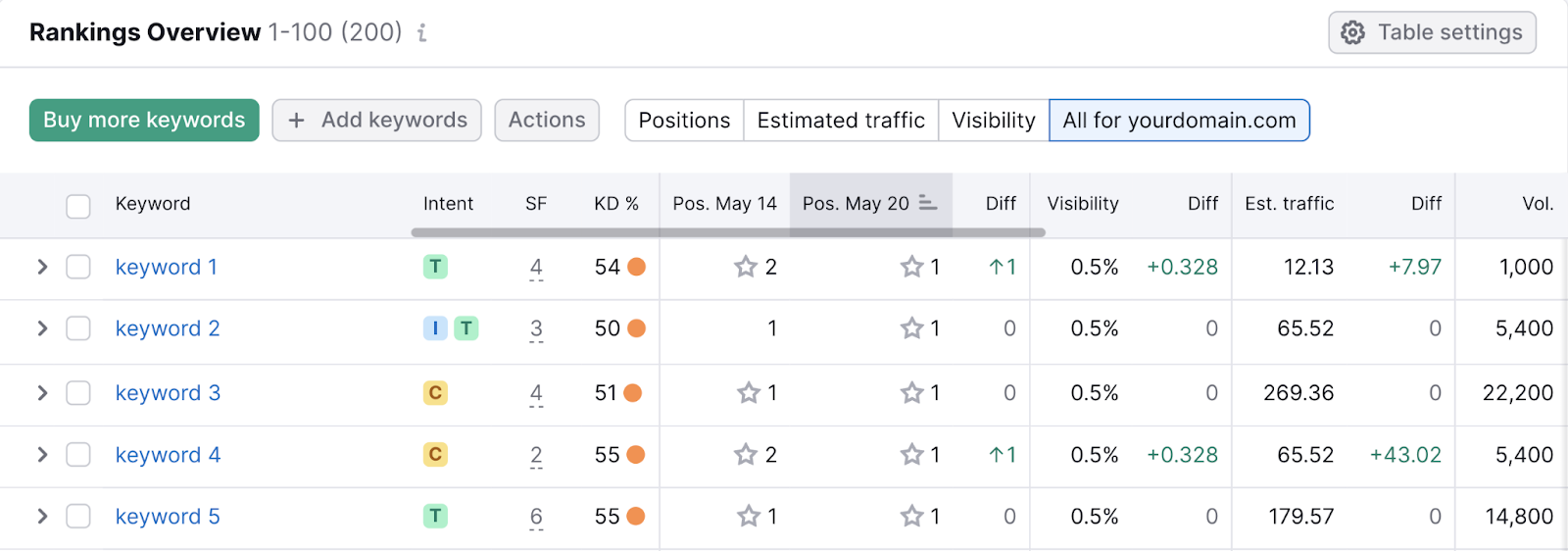
You can find your closest competitors in the “Competitors Discovery” tab.
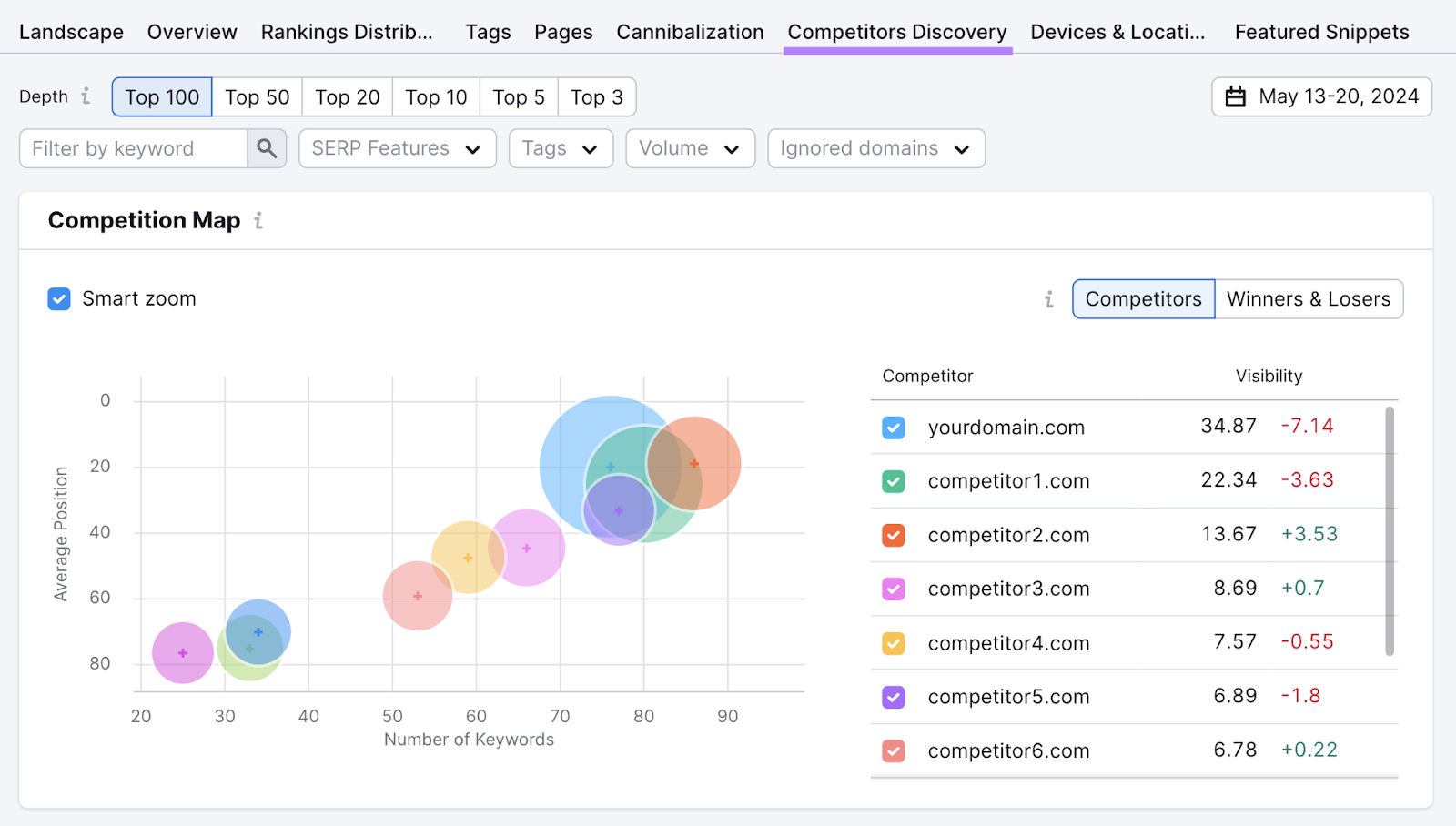
And see how many of your keywords have featured snippets you can pursue in the “Featured Snippets” tab.
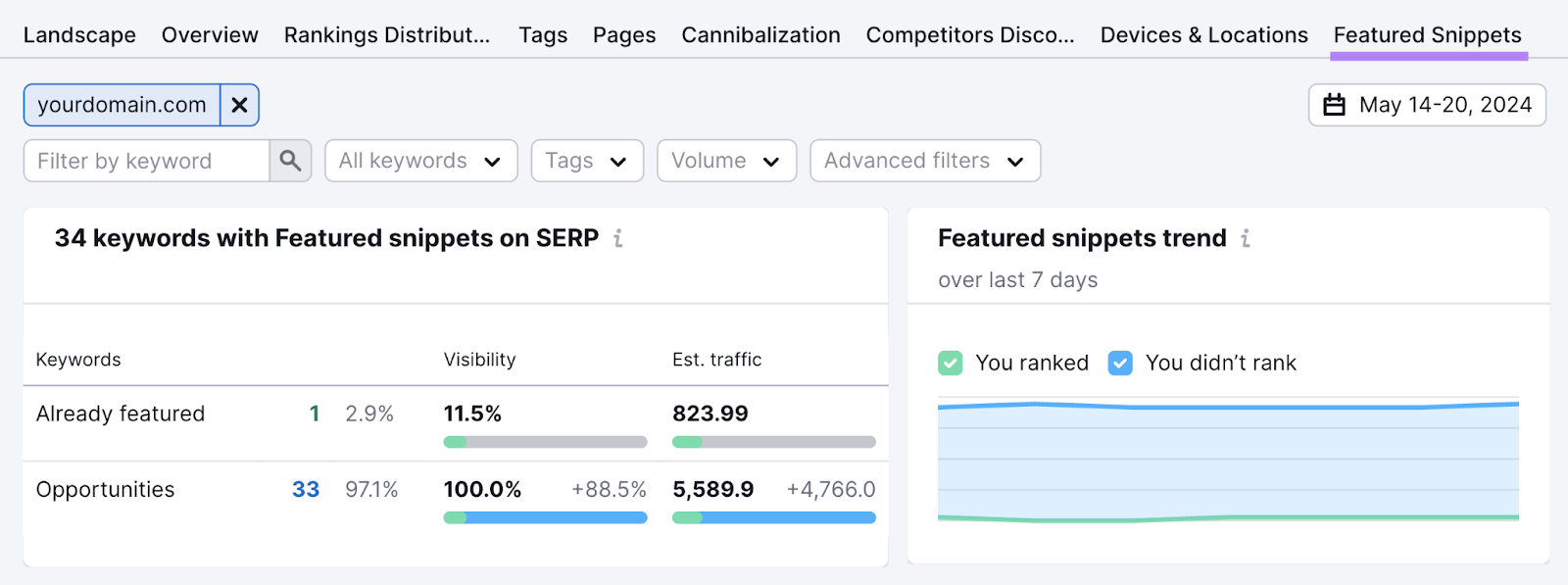
From here, you can make data-driven decisions to optimize your SEO efforts for better visibility and conversions.
Leverage Keyword Research Tools for Success
Doing keyword research manually is time-consuming. And increases the risk of missing opportunities and making mistakes that can derail your entire SEO strategy.
That's why it’s best to use keyword research tools that are designed to streamline and simplify the keyword research process.
If you’re looking to execute on the keyword research checklist above, sign up for a free Semrush account.
